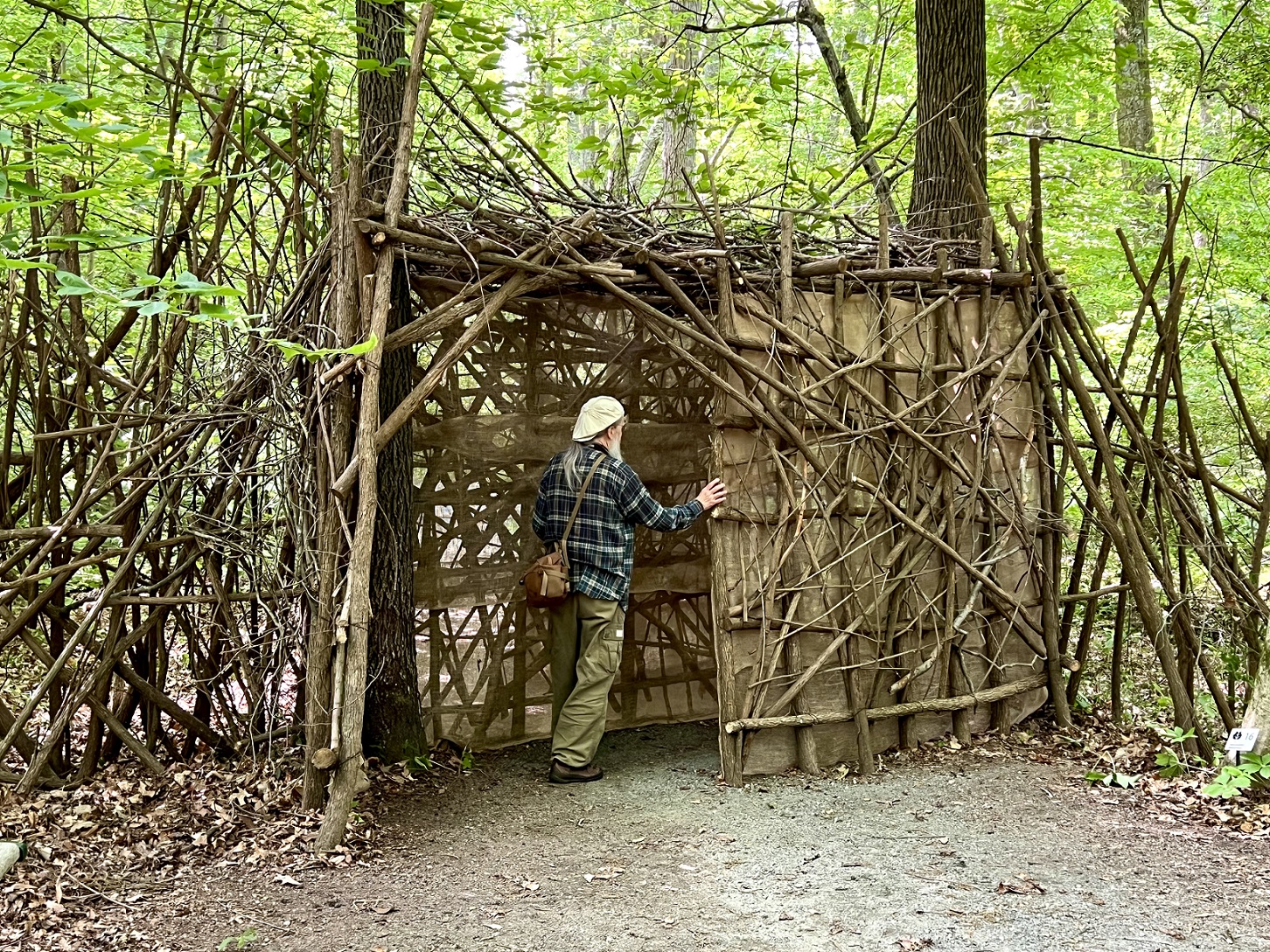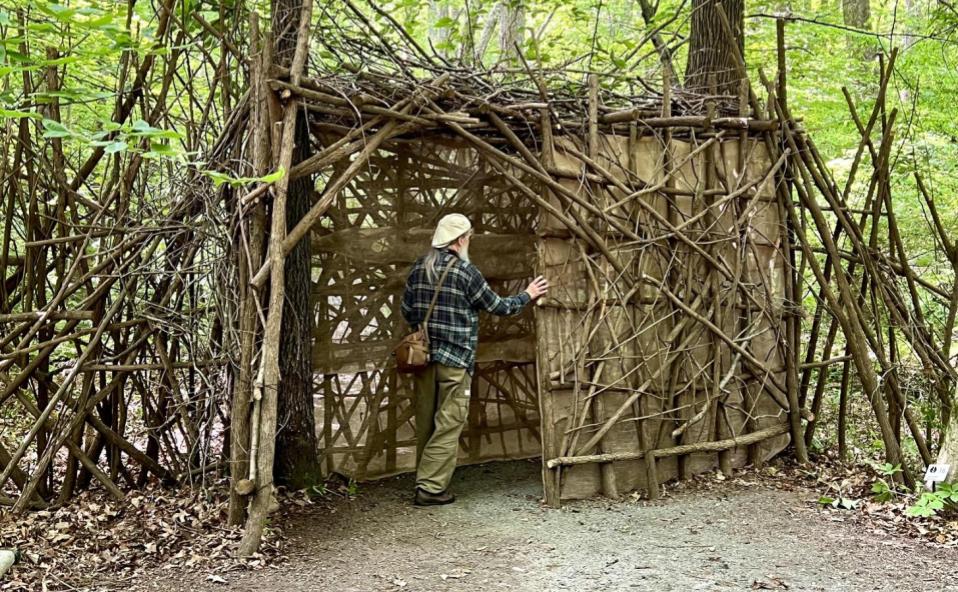Many stories are woven into the landscape at Adkins Arboretum. This spring, five artists from the mid-Atlantic region brought some of them to light with their sculptures on view June 1 through Sept. 30 in the Arboretum’s 11th biennial Outdoor Sculpture Invitational—Artists in Dialogue with Landscape. The artists will talk about the stories that inspired their artworks during a reception and guided sculpture walk on Sat., June 3 from 2 to 4 p.m.
“News Alert—Dinosaur Tracks Discovered at Adkins Arboretum!” is Yardley, Penn., artist Elizabeth McCue’s take on how the Arboretum may have looked in prehistory. Set in a curving path, her trackway of huge sauropod footprints marches off into the forest beyond.
The Arboretum’s present-day paths prompted Marcos Smyth of Alexandria, Va., to create “Revelator.” Spanning a path under the trees, it creates an unexpected barrier, forcing walkers to enter its wheelchair-accessible U-shaped tunnel. Inside, it reveals itself as a place of dappled light and shadow where one is largely concealed from the outside world but can see through the latticework of sticks and burlap that form its walls. It’s an invitation to pause, look around and open to the peace and revelations the forest offers before moving on.

“Revelator,” a sculpture by Marcos Smyth
Stephanie Garon, of Clarksville, Md., also took up the theme of traveling with three towering figures made of bundles of willow saplings that seem to stride across the Arboretum’s South Meadow. After learning that this land was the home of the native Choptank people until colonization forced them to migrate, Garon began to consider how people around the world are being displaced as climate change makes their homes uninhabitable through sea level rise and intensified weather patterns.
In her travels as an art handler moving art for museums and galleries across the U.S. and Canada, Laurel, Md., artist Melissa Burley often witnesses the effects of increasingly severe storms caused by climate change. Also disturbed by the discarded water bottles and tattered plastic bags caught in fences along the highways, she was inspired by Chief Seattle’s famous words, “Man does not weave a web of life, he is merely a strand in it. Whatever he does to the web he does to himself.” A startling bright blue in the green of the forest, her sculpture, “Caught in a Web,” is an intimate tableau made of a picket fence and litter with a mirror behind a silvery web that reflects the viewer’s own face.
Another aspect of the same web is revealed by colorful flags set in a patch of delicate ferns surrounding a large tree. “All Together,” a second sculpture by McCue, evokes the Wood Wide Web popularized by Suzanne Simard’s book Finding the Mother Tree. Only recently discovered by scientists, the mycorrhizal network that trees use to communicate and forge symbiotic relationships is hidden underground, but McCue has made it visible by marking its interconnected patterns with hundreds of multicolored flags radiating from a “Mother Tree.”
For Towson, Md., artist Bridgette Guerzon Mills, it was natural to let the forest’s trees tell their own stories. Gathering acorns, seedpods, bark, lichens, moss and leaves, she stitched them onto the pages of a large handmade book where they form a gentle meditation on trees’ role in the forest ecology. As well as containing the seeds of the next generation of trees, such “forest litter” provides food for animals and nutrients for the soil and is crucial to the health of the forest.
A powerful awareness of such intricate interconnections runs through all these artists’ works. In their various ways, they explore the realization that in our ever-changing world, the interconnections humans share with all of nature are crucial to the web of life on earth.
This show is part of Adkins Arboretum’s ongoing exhibition series of work on natural themes by regional artists. It is on view June 1 through Sept. 30 at the Arboretum Visitor’s Center located at 12610 Eveland Road near Tuckahoe State Park in Ridgely. Contact the Arboretum at 410-634-2847, ext. 100 or [email protected] for gallery hours.
A 400-acre native garden and preserve, Adkins Arboretum provides exceptional experiences in nature to promote environmental stewardship.



Write a Letter to the Editor on this Article
We encourage readers to offer their point of view on this article by submitting the following form. Editing is sometimes necessary and is done at the discretion of the editorial staff.